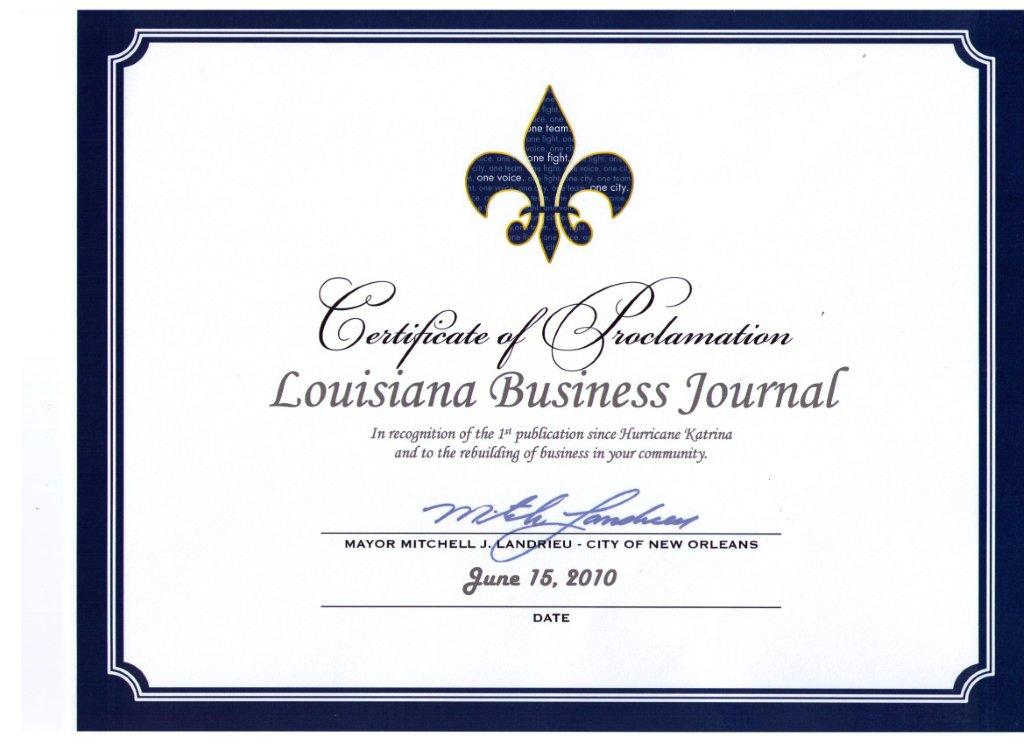Juneteenth and General Order Number 3
06/11/2024
 By Galveston Historical Foundation By Galveston Historical FoundationEditor's note: This article was originally posted on www.galvestonhistory.org. Juneteenth and General Order Number 3, read on June 19, 1865, announcing that all slaves were free, is one of Galveston’s most important historical moments. US President Abraham Lincoln announced the Emancipation Proclamation on September 22, 1862. Issued under powers granted to the president “as a fit and necessary war measure,” the proclamation declared, “That on the 1st day of January, AD 1863, all persons held as slaves within any State or designated part of a State the people whereof shall then be in rebellion against the United States shall be then, thenceforward and forever free . . .” However, Lincoln’s proclamation would have little impact on Texans at that time due to the small number of Union troops available to enforce it.
In 1979, the Galveston Juneteenth Committee under the leadership of former city manager Doug Matthews and Texas Representative Al Edwards initiated an annual Juneteenth Celebration on the lawn of Ashton Villa at 2328 Broadway. The event commemorates the reading of General Order Number 3 through prayer, reflections, and community leadership. In 2006, the JuGneteenth Committee with the City of Galveston erected a statue of the reading of the order that remains a permanent reminder to residents and visitors of the June 19, 1865, event. The City of Galveston transferred the building and grounds in November 2018 to Galveston Historical Foundation, which preserved and managed the property since 1970. 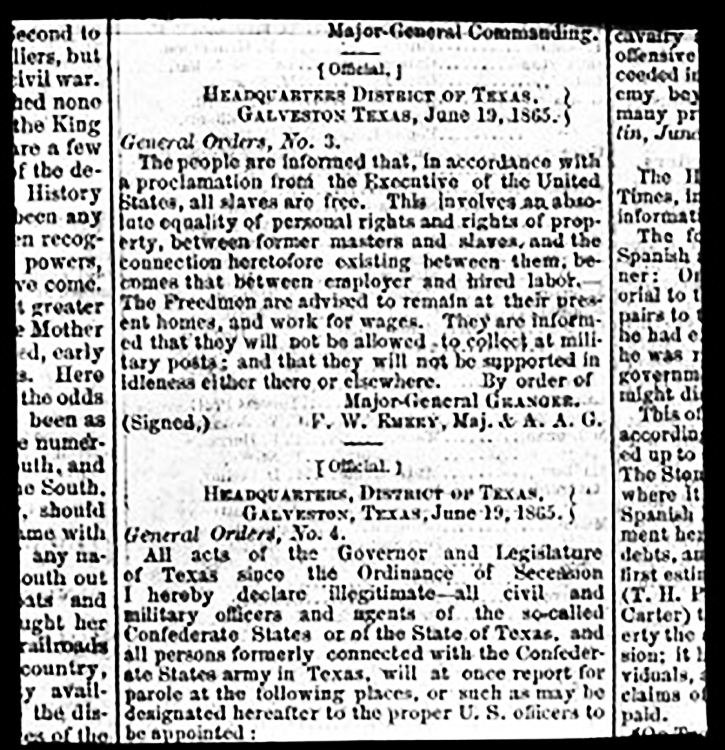 General Order Number 3 General Order Number 3
General Order Number 3, Galveston Historical Foundation
The history of celebration commemorating Juneteenth and General Order Number 3 is significant and is a defining piece of modern commemorations. On January 2, 1866, Flake’s Bulletin, a Galveston newspaper, reported on an emancipation celebration: The old plantation melodies . . . were transformed into a new song and the sunshine of the dreams that once dwelt in their hearts burst full and fair upon them as they both felt and realized the fullness of the freedom that is now theirs—not only to enjoy but to perpetuate. . . . The conclusion of the day went out amid the pleasures that always cluster about the ball-room [sic], and if a memory of olden times came back from the ringing shout of the dancers as the ‘break-down’ was getting the benefit of their ‘best licks,’ it is to be hoped that the contrast suggested more of pleasure than regret. The colored people of Galveston certainly deported themselves creditably in celebrating ‘their 4th of July' (Flake’s Bulletin, 20 June 1878). When the above was written, the newspaper was also printing wire reports from across the state devoted to emancipation celebrations in Brenham, Marlin, Liberty, Bastrop, and elsewhere. African Americans throughout Texas observed June 19 with parades and picnics, speeches, and dancing. In many communities, groups bought their own land for this and other events, often naming these tracts Emancipation Park. 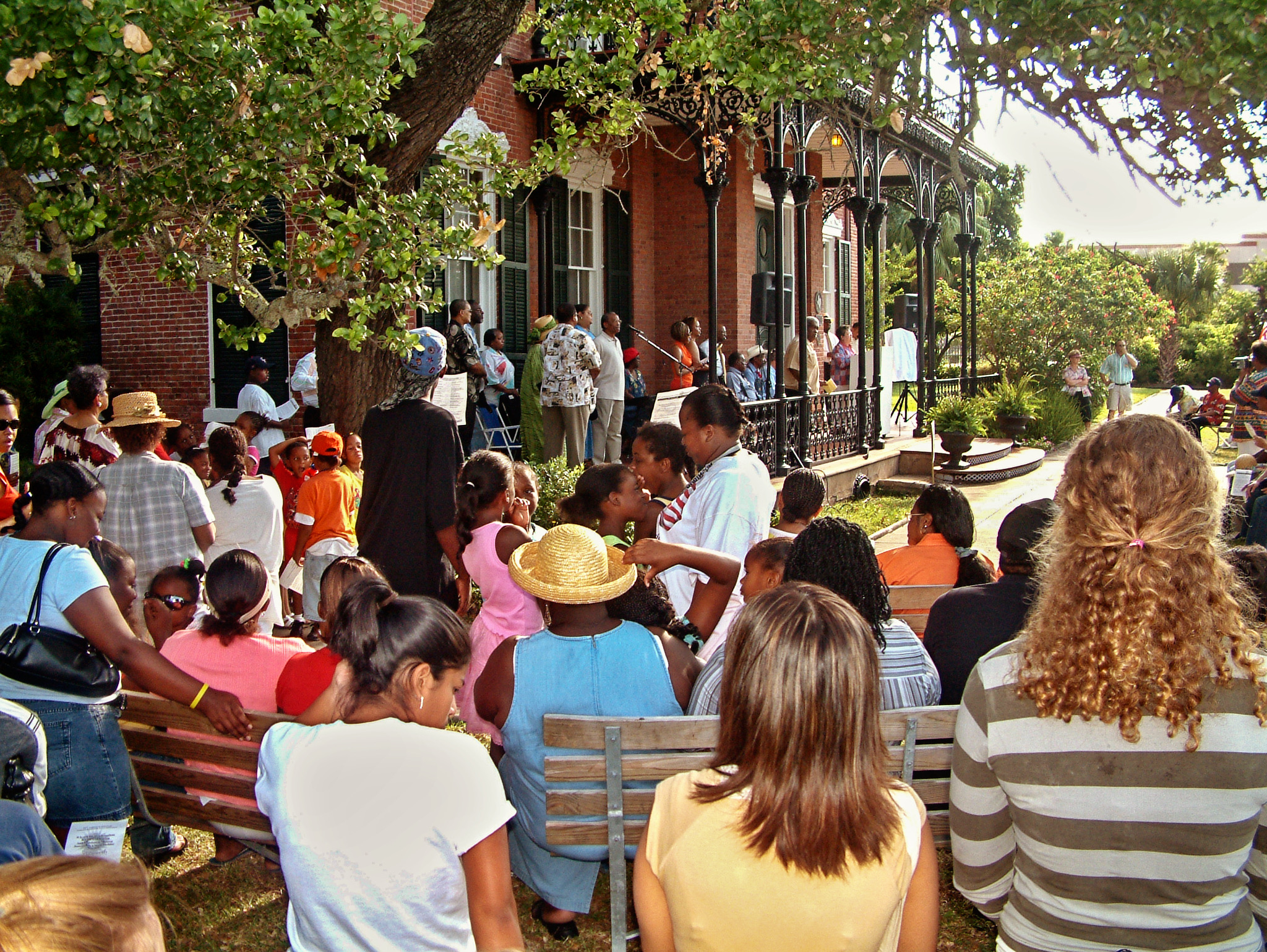 Juneteenth Commemoration at the 1859 Ashton Villa, Galveston Historical Foundation The days of “monstrous and brilliant” parades in Galveston gave way to more private Juneteenth celebrations in the middle years of the twentieth century, with families gathering for beach parties and cook-outs. Churches observed Emancipation Day with the reverent singing of the song Lift Every Voice (the official song of the National Association for the Advancement of Colored People), and the plea to remember the significance of the nineteenth of June and the joy of freedom. Texas Historical Commission Marker 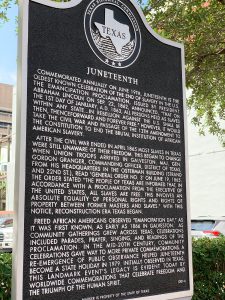 Texas Historical Commission Juneteenth Marker at 22nd and Strand, Galveston Historical Foundation In 2014, the Texas Historical Commission placed a subject marker at the corner of 22nd and Strand, near the location of the Osterman Building, where General Granger and his men first read General Order Number 3. The marker reads: Commemorated annually on June 19th, Juneteenth is the oldest known celebration of the end of slavery in the US. The Emancipation Proclamation, issued by President Abraham Lincoln on Sep. 22, 1862, announced, “That on the 1st day of January, AD 1863, all person held as slaves within any state . . . in rebellion against the US shall be then, thenceforward and forever free.” However, it would take the Civil War and passage of the 13th Amendment to the Constitution to end the brutal institution of African American slavery.
After the Civil War ended in April 1865 most slaves in Texas were still unaware of their freedom. This began to change when Union troops arrived in Galveston. Maj. Gen. Gordon Granger, commanding officer, District of Texas, from his headquarters in the Osterman building (Strand and 22nd St.), read "General Order Number 3" on June 19, 1865. The order stated “The people of Texas are informed that, in accordance with a proclamation from the executive of the United States, all slaves are free. This involves an absolute equality of personal rights and rights of property between former masters and slaves.” With this notice, reconstruction era Texas began.
Freed African Americans observed “Emancipation Day,” as it was first known, as early as 1866 in Galveston. As community gatherings grew across Texas, celebrations included parades, prayer, singing and readings of the proclamation. In the mid-20th century, community celebrations gave way to more private commemorations. A re-emergence of public observance helped Juneteenth become a state holiday in 1979. Initially observed in Texas, this landmark event’s legacy is evident today by worldwide commemorations that celebrate freedom and the triumph of the human spirit.
Original article: https://www.galvestonhistory.org/news/juneteenth-and-general-order-no-3 Back To News |
|
|
|
|
||
|
© 2025 Small Business Exchange, Inc. |
||


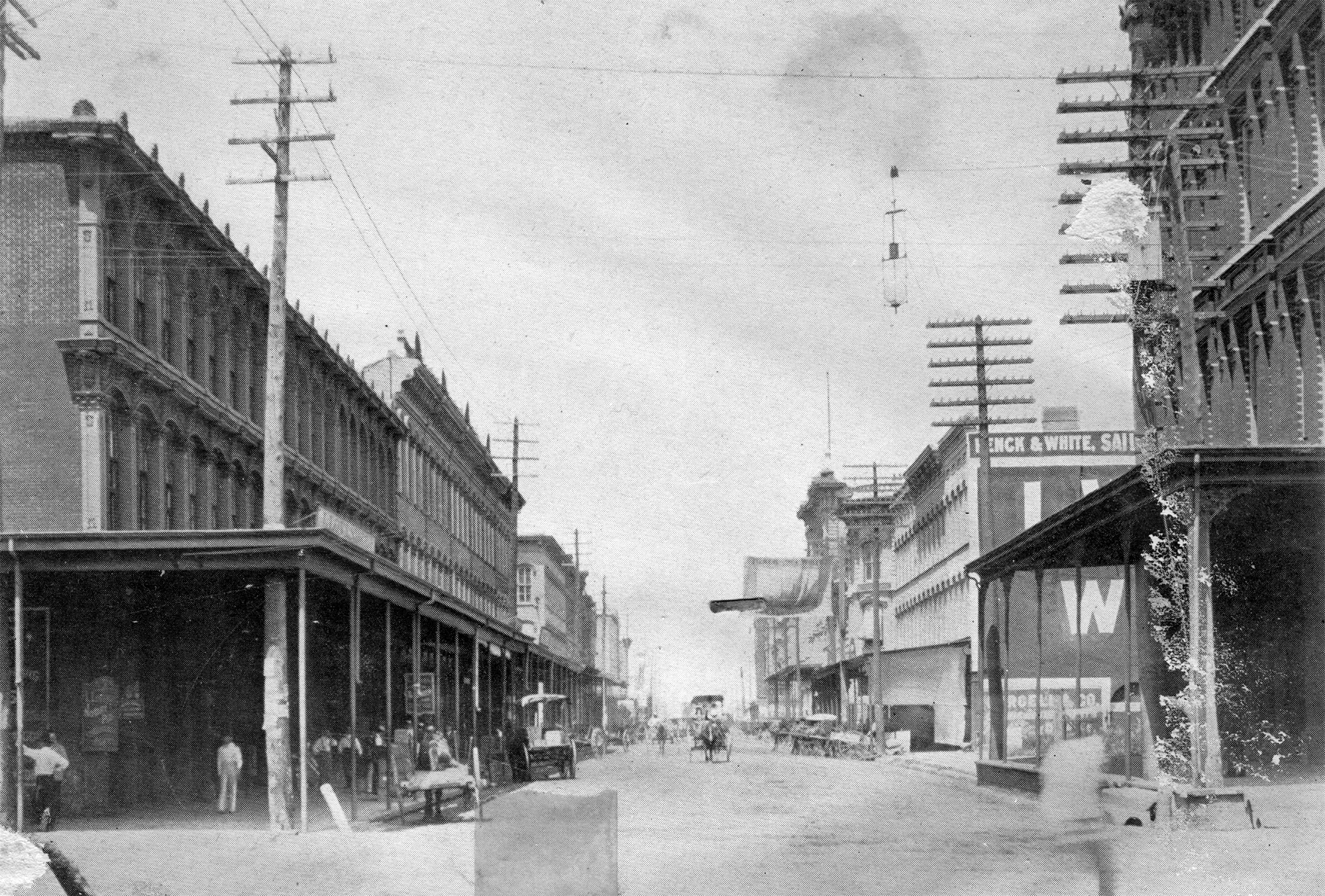 It was from that moment that Juneteenth would be born. Since then, the annual commemoration has grown from local roots to a national celebration featuring parades, readings, processions, and more. In the late 1970s, the Texas legislature declared Juneteenth a “holiday of significance [ . . . ] particularly to the blacks of Texas.” Texas was the first state to establish Juneteenth as a state holiday under legislation introduced by freshman Democratic state representative Al Edwards (Houston). The law passed through the Texas legislature in 1979 and was officially made a state holiday on January 1, 1980. After Texas recognized the date, many states followed suit. Currently, forty-seven of the fifty US states and the District of Columbia have recognized Juneteenth as either a state holiday or ceremonial holiday, a day of observance.
It was from that moment that Juneteenth would be born. Since then, the annual commemoration has grown from local roots to a national celebration featuring parades, readings, processions, and more. In the late 1970s, the Texas legislature declared Juneteenth a “holiday of significance [ . . . ] particularly to the blacks of Texas.” Texas was the first state to establish Juneteenth as a state holiday under legislation introduced by freshman Democratic state representative Al Edwards (Houston). The law passed through the Texas legislature in 1979 and was officially made a state holiday on January 1, 1980. After Texas recognized the date, many states followed suit. Currently, forty-seven of the fifty US states and the District of Columbia have recognized Juneteenth as either a state holiday or ceremonial holiday, a day of observance.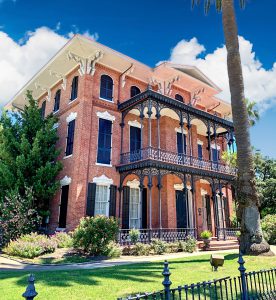 1859 Ashton Villa, Galveston Historical Foundation
1859 Ashton Villa, Galveston Historical Foundation
